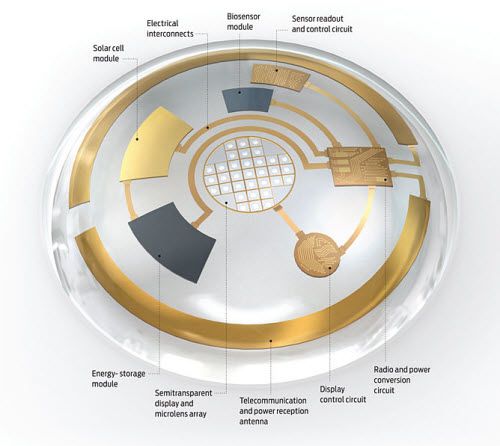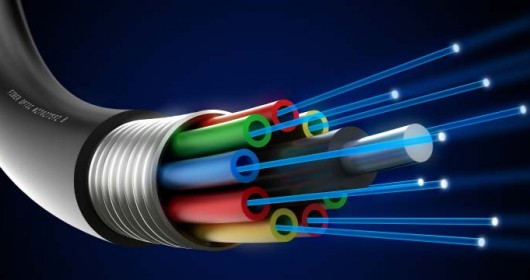These are the inevitable goal for products like the Google glasses, moving from bulky spectacles to imperceptible contact lens to read text, check emails, and augment your vision with Terminator-style info or augmented sculptures and artworks. You could also wear them to play video games.
The lenses require organic materials that are biologically safe and also use inorganic material for the electronic circuits. The electronic circuits are built from a layer of metal a few nanometres thick. The light-emitting diodes are one third of a millimetre across. A grey powder is sprinkled onto the lens. Then a technique called microfabrication or ‘self-assembly’ is used to shape each tiny component. Capillary forces pull the pieces into their final position.
The technology was trialled at the University of Washington in Seattle, and currently they’re safe and feasible, but lacking a good power source and only have a single-pixel display. The device is still best characterized as a prototype. The microcircuitry only is enough to support one light-emitting diode. Still, that hasn’t prevented the team from dreaming big about various possibilities: for computing, gaming, and entertainment, among others.








Comments are closed.